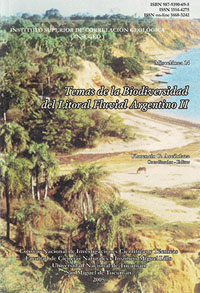Miscelánea 14
Ecología alimentaria de algunas especies de Passeriformes (Furnariidae, Tyrannidae, Icteridae y Emberizidae): consideraciones sobre algunos aspectos del nicho ecológico
Viviana G. Alessio | Adolfo H. Beltzer | Rafael C. Lajmanovich | Martín A. Quiroga
Descargar trabajo en formato PDFAbstract
FEEDING ECOLOGY OF PASSERINE SPECIES (FURNARIIDAE, TYRANNIDAE, ICTERIDAE AND EMBERIZIDAE): CONSIDERATIONS ON ASPECTS OF THEIR ECOLOGICAL NICHE. Aspects related to the feeding ecology of thirteen passerine birds species belonging to families: Furnariidae (Certhiaxis cinnamomea , Phacellodomus ruber, Schoeniophylax phryganophila), Tyrannidae (Xolmis coronata, Satrapa icterophrys, Tyrannus melancholicus, Machetornis rixosus, Tyrannus savana), Icteridae (Cacicus solitarius, Icterus cayanensis, Molothrus rufoaxilaris) and Emberizidae (Coryphospingus cucullatus, Zonotrichia capensis) are presented in the present manuscript. This study was undertaken to investigate the feeding ecology of mentioned species by quantifying the trophic spectrum, spatial and temporal dimensions of the niche breadth, circadian rhythm of feeding activity and habitat selection, stating as a null hypothesis that, studied passerines species, lack mechanisms to segregate each other (not allowing coexistence among them) and as the alternative hypothesis the presence of those mechanisms. Captures and field observations were conducted by INALI at Carabajal Island (Santa Fe, Argentina, 31º 39´S – 60º 41´W) as part of exploratory samples carried out on years 1981, 1982, 1983, 1984, 1985, 1989, 1990 and 1991. The contribution of each food category to the trophic spectrum, seasonal variations, trophic niche amplitude, circadian rhythm of feeding activity, prey size, feeding efficiency, habitat preference and a dendogram of similarities were estimated and calculated by the application of different qualitative indexes and other statistical tools. Results reveal that insects are one of the main ingested items followed by seeds. Other types of foods were just accessories. This data represent valuable information to the knowledge of the thirteen studied species.






